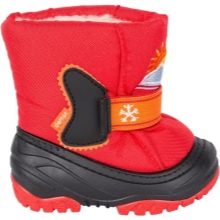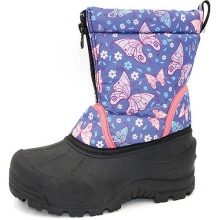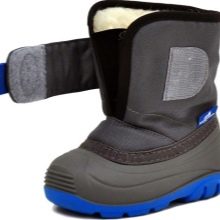Children's snowboards: description, rating of the best models and tips for choosing
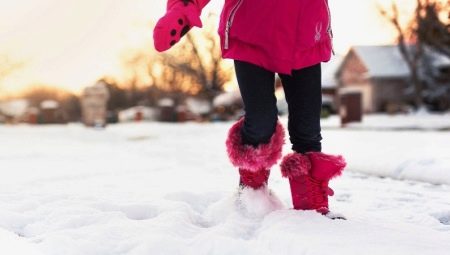
In late autumn and early spring, the weather outside is unstable - in the morning the temperature is about 0, in the afternoon it rises to +4, and in the evening it drops to -5. In such a situation, choosing shoes is not at all easy, which is why many manufacturers have launched the production of snowboots - these are universal shoes that can be worn even in a little frost and in slush. Let's dwell in more detail on the varieties of children's snowboards and the intricacies of choosing the optimal model.
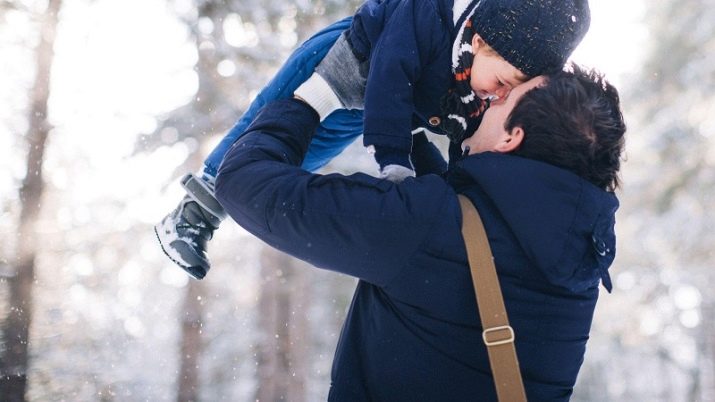
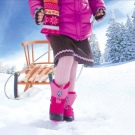

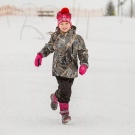
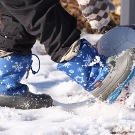
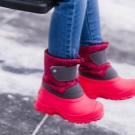
What it is?
Snowboats are comfortable shoes for children that can be worn with equal comfort in any wet environment, be it early spring, late autumn or winter with sleet. Among the useful operational features of this type of footwear, one can single out the ability to withstand ice puddles and snow slurry, protect children's feet from dampness and retain heat.
This functionality is due to the unusual structure of the shoe, which includes the following elements.
- Galosha - the bottom of the shoe. As a rule, it is sewn from high-tech rubber, which is flexible, does not allow moisture to pass through, does not crack in the cold and does not stiffen after a long stay at low temperatures.
- Bootleg - made of textile material treated with water-repellent impregnations. Differs in good breathability.
- Filling - This is the part of snowboards that is responsible for keeping warm. The insole in such shoes is usually three-layer: the first layer removes the cold, the second regulates the level of humidity, and the third heats the feet. Natural wool is usually used to insulate the bootleg, which provides additional protection from the cold.
Snowboards can be used in temperatures ranging from 0 to -20 degrees. Some manufacturers offer models that effectively warm feet even in frosts down to -30 degrees.

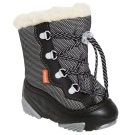

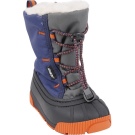
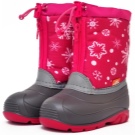
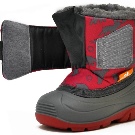
Advantages and disadvantages
Snowboots have many advantages over other types of footwear:
- grooved sole ensures safe movement even on ice-covered road sections;
- the presence of additional fasteners contributes to an improved fit on the leg of a child of any size - it can be laces, Velcro or snakes with weights;
- ease of cleaning - that part of the footwear that is most often dirty is made of rubber, it can be washed without any problems with a regular damp cloth;
- snowboards can be dried near batteries and other heating devices, from this they will not deform and become covered with unpleasant stains;
- Snowboots sit well on both high and low instep.
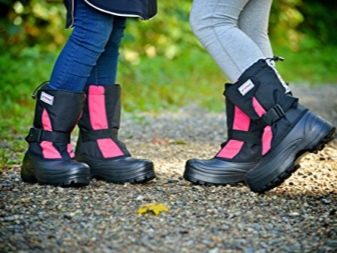

However, it was not without its drawbacks. Most of the models have not hard enough back, therefore, shoes must be selected strictly according to size. Buying a model with a margin is fraught with foot deformity.
Galoshes are not suitable for use in deep puddles - in this case, the membrane under them quickly gets wet, and moisture penetrates into the shoe.
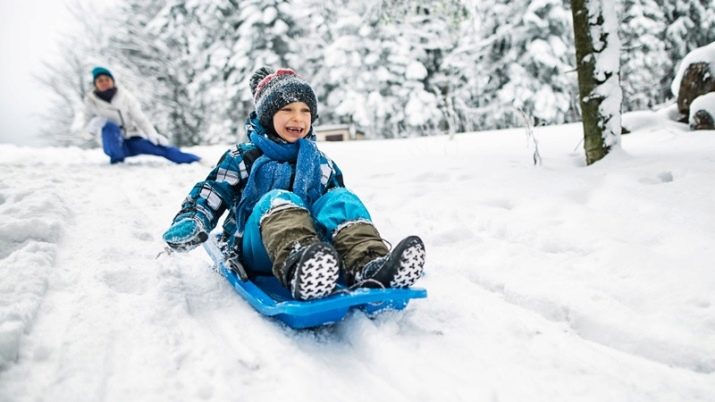
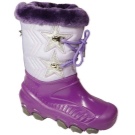
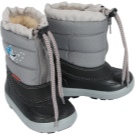
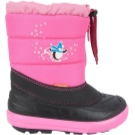

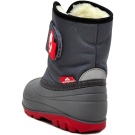
Materials (edit)
Depending on the material from which the snowboards are made, there are two types of shoes.
EVA
The peculiarity of this material is its weightlessness, snowboots weigh like light beach flip flops. The list of advantages of the material does not end there - it perfectly retains heat, and children feel comfortable even at temperatures down to -20 degrees. However, this material also has its drawbacks. He does not like high temperatures, so you should not dry your shoes by putting them on a hot radiator or near a fireplace.
Another disadvantage of such models is "floating size". Usually, a double parameter is indicated on the sole of such children's shoes - 22/23, 25/26, etc. This is due to the technological features of production. Simply put, EVA snowboards are cooked in a hot oven. The workpieces are heated, pulled over the last, on which the shoes shrink slightly as they cool and then take the required shape. In such conditions, errors are not excluded, therefore EVA shoes are the same size, but may vary slightly in length from different batch.
A purchase can be made only after preliminary fitting, purchases via the Internet are not recommended in this case.
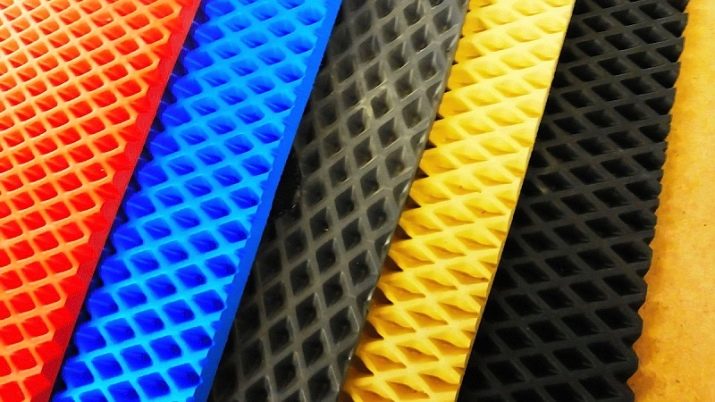
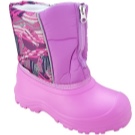
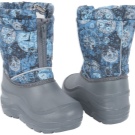
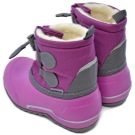
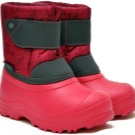
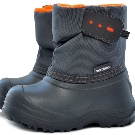
TEP
TPE is a thermoplastic elastomer that is highly durable, which makes these snowboats heavier than EVA models. TEP not so slippery, like EVA, so it is better to ride down the hill in EVA shoes, but for fast movement on ice, it is better to give preference to TEP. TEP is highly resistant to frost, but still retains heat worse than EVA, therefore, mainly demi-season shoes are produced from TEP. The optimum operating temperature varies from -5 to +5 degrees, with warm socks it is allowed to use in weather conditions down to -10 degrees.
In this case, it is imperative to take into account the individual's susceptibility to cold and climate. Agree that in Moscow and in Siberia -10 ° C is felt absolutely differently. Unlike EVA, the TPE size range does not "float", so you can look at the size grid provided by the manufacturer. Traditionally, it is different for each individual model, since the insulation has a different thickness. High parameters of frost resistance and strength characteristics of TEP make it possible to use it for sewing special boots, which are chosen by the parents of children involved in orienteering on the terrain in the winter.
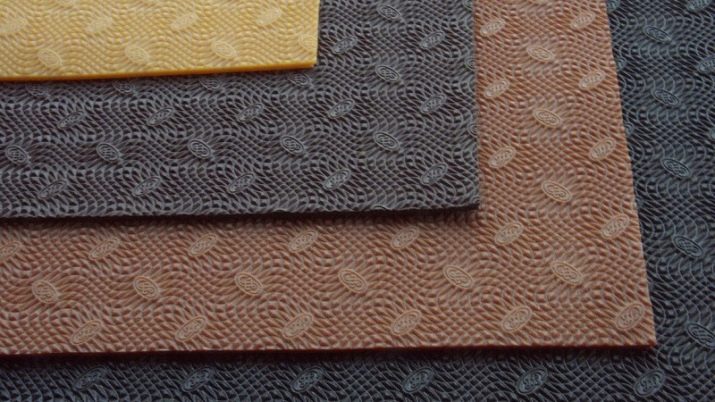

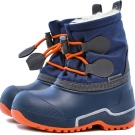
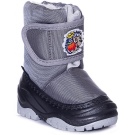
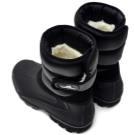

Manufacturers
Nowadays, snowboots are included in the assortment list of many well-known manufacturers of children's shoes. Let's dwell on the most popular ones.
Ortotex
All models of this brand are made in Italy and are available in sizes from 20 to 35. A feature of Ortotex snowboards is the presence of a pull-cord or lacing for the most tight fit. Interior decoration - wool. The sole is high, has a grooved non-slip surface.
Most of the products are designed for high instep, so they are comfortable to wear with a warm thick sock. These snowboots keep warm well at temperatures down to -25 degrees.

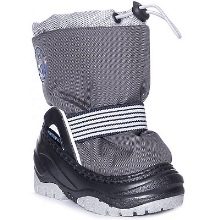
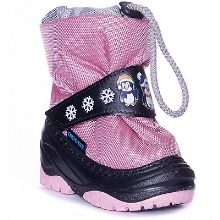
"Zebra"
This is a well-known domestic manufacturer, all products of which are manufactured in Russia and China. The shoes are not designed for harsh weather conditions, therefore the lowest temperature limit for use of these snowboots is only -20 degrees.... Most of the products include a fabric boot, which is fixed to the leg with Velcro, cords and rivets. Internal insulation is provided by natural wool.
The sole is made of TPE, the degree of groove and height vary in different models. Without exception, all snowboots of this brand are distinguished by high waterproof characteristics and a non-slip protector.
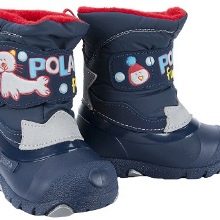
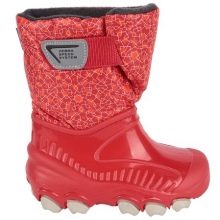
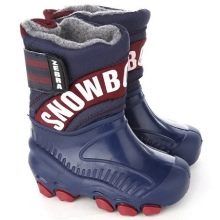
Nordman
Another well-known Russian company that has established the production of snowboards, all production facilities of the enterprise are located in our country. The assortment portfolio includes both demi-season models and those that can be used in winter. However, it should be taken into account that the temperature range set by the manufacturer is more likely for European winters - Siberians are better off giving preference to other manufacturers, since demi-season collections are designed to be worn at temperatures down to -5 degrees, and winter ones - only up to -15.
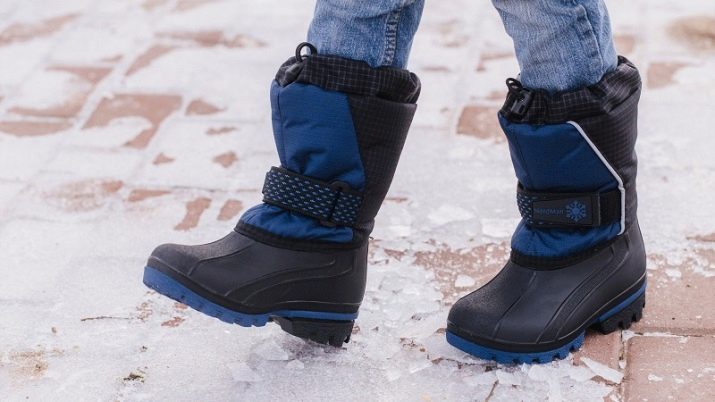

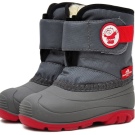
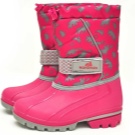
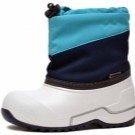
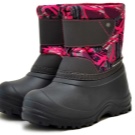
Mursu
The Finnish manufacturer, however, most of the products are made in China and Russia. The shoes are designed for sizes 18 to 40. The sole and galoshes are made of TPE and rubber, the upper is textile, the filling in 80% of cases is represented by wool. The declared temperature range of operation is up to -20 degrees, although, as testimonies indicate, it is better not to wear them in frosts above -15 degrees.
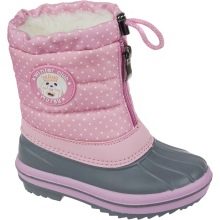
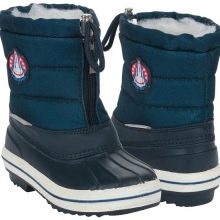
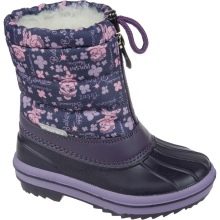
Reima
Another well-known brand from Finland. Snowboards of this brand are sewn exclusively from natural materials; leather elements are provided in the upper inserts. The outsole is made of thermoplastic rubber, which makes it flexible and non-slip. The insole is made of felt; most of the models have a polyester lining inside.


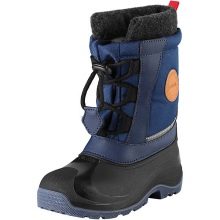
Kakadu
A Russian brand that attracts attention with the originality of the colors and the brightness of the colors of the product, as well as the presence of models designed for the harsh Russian winters. Snowboats of this brand are filled with natural wool. The cuff is sewn from genuine leather or membrane fabric, this makes it possible to use them at temperatures down to -30 degrees.
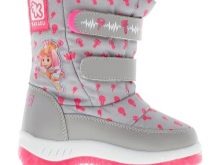
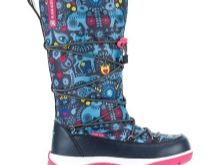
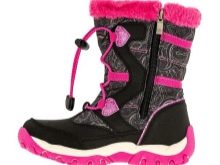
Kuoma
One of the most popular brands. Manufactured in Finland, these snowboots are distinguished by an inflated line of overshoes, which almost completely eliminates moisture from entering the shoe. For convenience, there is a Velcro fastener, the inner lining is made of sheepskin fur. Such shoes are resistant to wear, and a heel shock absorber acts as a bonus, which greatly reduces the load on the foot.
However, with all the advantages, such products are rather autumnal, they can only be worn down to -10 degrees.

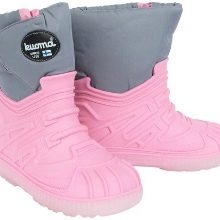
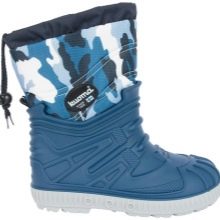
Northside
A brand from the USA focused on creating footwear for older children and adolescents. All products are characterized by a raised overshoes and grooved soles made of thermoplastic or rubber material. The upper part of the boot is made of nylon, the inner layer is made of artificial wool. Velcro and weights are provided.
The manufacturer declares that the snowboards can be used at temperatures up to - 25 degrees, although, as practice shows, given the quality of the materials used, only the most active children will be warm in such a frost.
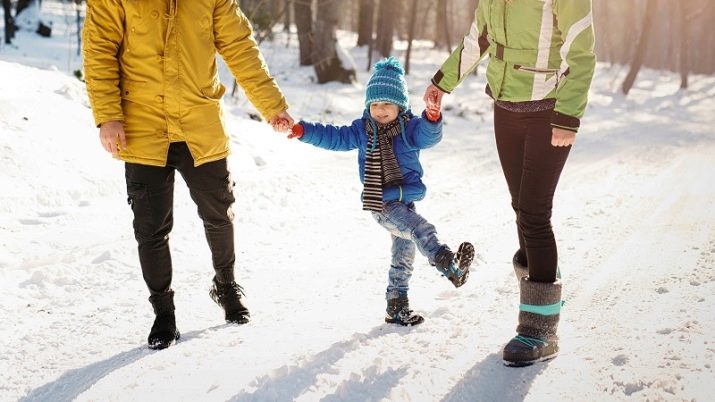

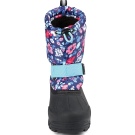
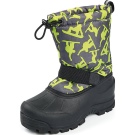
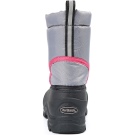
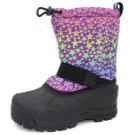
Demar
A Polish manufacturer offering snowboards for the youngest users. For maximum convenience, the assortment list includes models with a zipper. The boots have an additional tightening. The sole is grooved, the overshoe is high, wool is used for internal insulation. The shoes are quite lightweight.
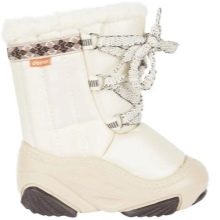

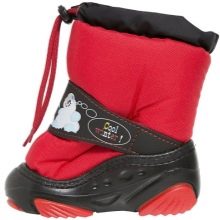
"Kotofey"
A brand known to Russian mothers, which is distinguished by the breadth of the size range and a variety of design solutions. These shoes are available in versions for boys and girls. Galoshes are made of polymers or rubber, the inner layer is wool or artificial fur. Here you can find models with a removable felt boot.

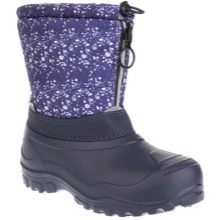
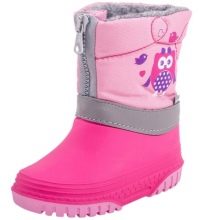
How to choose?
When choosing the optimal model, the first thing you need to pay attention to is the dimensional grid. Children grow up very quickly, and in winter they often wear warm socks on their feet, so when choosing snowboots, you need to focus on products in which the size of the insole is 5 mm longer than the length of the child's foot. It is best to purchase products from companies that have won a good reputation in the market and have earned the best user reviews. The brands above are great choices.
It is preferable to purchase shoes in specialized stores, since the percentage of fakes is high in spontaneous markets.




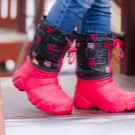

Review overview
Reviews of children's snowboards are generally positive. The model is indispensable for children in the off-season, as well as in winter, accompanied by slush. As for use in cold weather, snowboots are suitable for active children, for children with moderate activity it is better to opt for other types of shoes. We draw your attention to the fact that snowboots are shoes that are primarily intended for active winter pastime, so this option is not suitable for babies who still cannot sit, they can choose warm booties on a sheepskin. But for the first steps, such shoes will be indispensable; it is better to give preference to models with flexible soles.
